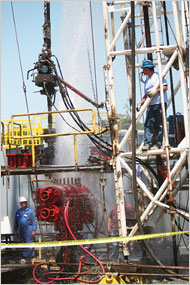
© Gemini Observatory / AURA
After getting whacked unexpectedly by a small comet or asteroid, Jupiter is sporting a "bruise," which has been big news this week. In visible wavelengths, the impact site appears as a black spot. But in a new image taken in near infrared by the Gemini North telescope on Mauna Kea, Hawai'i, the spot shows up in spectacular glowing yellow.
"We utilized the powerful mid-infrared capabilities of the Gemini telescope to record the impact's effect on Jupiter's upper atmosphere," said Imke de Pater from the University of California, Berkeley. "At these wavelengths we receive thermal radiation (heat) from the planet's upper atmosphere. The impact site is clearly much warmer than its surroundings, as shown by our image taken at an infrared wavelength of 18 microns."
As
Universe Today reported earlier, this new spot on Jupiter was first seen by Australian amateur astronomer Anthony Wesley on July 19th. This set off a flurry of activity as the large ground based observatories have imaged Jupiter in attempt to learn more about the impact and the object that struck Jupiter. Astronomers now say the object
was likely a small comet or asteroid, just a few hundreds of meters in diameter. Such small bodies are nearly impossible to detect near or beyond Jupiter unless they reveal cometary activity, or, as in this case, make their presence known by impacting a giant planet.



Comment: Have you read Stephen Hawking: Space debris represents biggest natural threat to humanity?